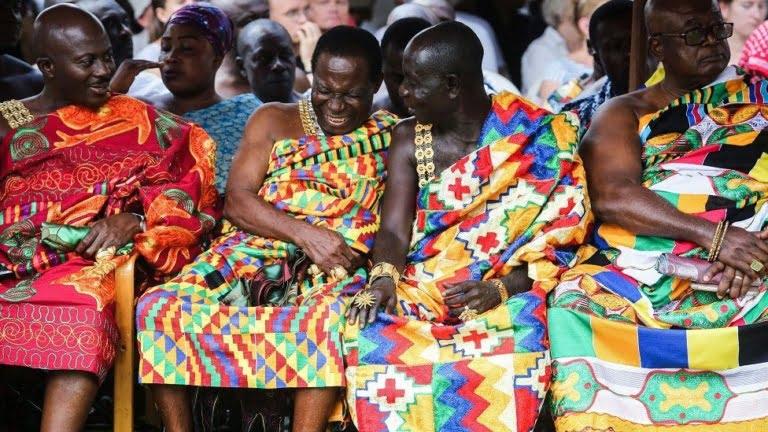table.wp-block-table {
width: 100%;
border-collapse: collapse;
margin: 0 auto;
}
table.wp-block-table th,
table.wp-block-table td {
border: 1px solid #e0e0e0;
padding: 10px;
}
table.wp-block-table th {
font-weight: bold;
}
Unveiling the Splendor of Kente: The Intricate Tapestry of African Heritage and Cultural Significance
Table of Contents
Meta Title: The Enchanting World of Kente: Unraveling the Heritage and Significance of an African Masterpiece
Meta Description: Kente, a vibrant and intricate tapestry, embodies the rich cultural tapestry of Africa. Discover its history, symbolism, and the artisans who keep this tradition alive.
Introduction
Kente, a resplendent textile that exudes cultural grandeur, originates from the Akan people of Ghana and the Ivory Coast. Renowned for its vibrant colors, intricate patterns, and profound past significance, Kente holds an esteemed position in African culture, transcending mere fabric to become an embodiment of heritage, identity, and artistry. This tapestry serves as both an aesthetic marvel and a poignant representation of the indomitable spirit of the African people.
The History of Kente
The story of Kente dates back centuries, with its origins shrouded in the annals of time. Legend attributes its creation to two brothers, Krugu Ablade and Krugu Ago, who where instructed in the art by a spider. During a hunting expedition, they stumbled upon a spider’s intricate web and were captivated by its geometric beauty. Inspired, they returned to their village and recreated the web’s patterns using cotton thread.
Over time, Kente evolved, influenced by various cultural and historical events. In the 17th century, the arrival of European traders introduced new dyes and materials, expanding the palette and complexity of Kente designs. By the 19th century, Kente had become a symbol of royalty, worn exclusively by chiefs, elders, and other notables.
The Symbolism of Kente
Kente is much more than just a fabric; it is a language of symbols. each color, pattern, and motif carries deep-rooted meanings and messages, often conveying proverbs, historical events, or the wearer’s status and achievements.
Colors: Each color in Kente holds a specific significance:
- Gold: Royalty, prestige, and wealth
- Blue: Peace, harmony, and prosperity
- Green: Growth, abundance, and renewal
- Red: Passion, courage, and strength
- Black: Spirituality, dignity, and mourning
Patterns: The numerous patterns woven into Kente represent various aspects of life, including:
- Adinkra symbols: Ancient ideograms that symbolize concepts like wisdom, love, and unity
- Geometric shapes: Represent harmony, order, and the balance between male and female energies
- Natural motifs: Depict plants, animals, and other elements from the natural world
The Master Artisans Behind Kente
Kente is meticulously handcrafted by skilled artisans, primarily in the Ashanti region of Ghana. The process involves several labour-intensive steps:
- cotton planning: Cotton is spun into thread and prepared for weaving.
- Dyeing: Natural dyes are extracted from plants, roots, and minerals to create the vibrant colors.
- Weaving: Artisans use horizontal and vertical looms to interweave the threads, creating the intricate patterns.
- Stitching: Separate strips of cloth are sewn together to form the final piece of Kente.
The Cultural Significance of Kente
Kente remains an integral part of Akan culture, worn during special occasions such as weddings, funerals, festivals, and religious ceremonies. It signifies identity, community, and the wearer’s place in society.
- royal attire: In the past, only chiefs and other high-ranking individuals were permitted to wear Kente.
- Symbol of wealth and status: Kente is often used as dowry or passed down through generations as a priceless heirloom.
- Cultural preservation: Kente workshops and festivals play a crucial role in preserving this traditional art form.
Kente in the Modern World
Kente’s influence extends far beyond the borders of Ghana and Africa. It has become a symbol of African pride and cultural diversity, embraced by individuals and organizations worldwide.
- Fashion and design: Contemporary designers incorporate Kente elements into clothing, accessories, and home décor.
- Cultural celebrations: Kente is featured in African-themed events,festivals,and cultural exhibitions.
- Educational tool: Museums and educational institutions use Kente to teach about African history and culture.
Conclusion
Kente is a testament to the creativity, skill, and cultural richness of the Akan people. Its vibrant colors, intricate patterns, and profound symbolism weave a tapestry that connects the past to the present, embodying the heritage and cultural significance of Africa. From royal attire to modern-day fashion, Kente continues to captivate and inspire, serving as a reminder of the indomitable spirit and boundless creativity of the African continent.

